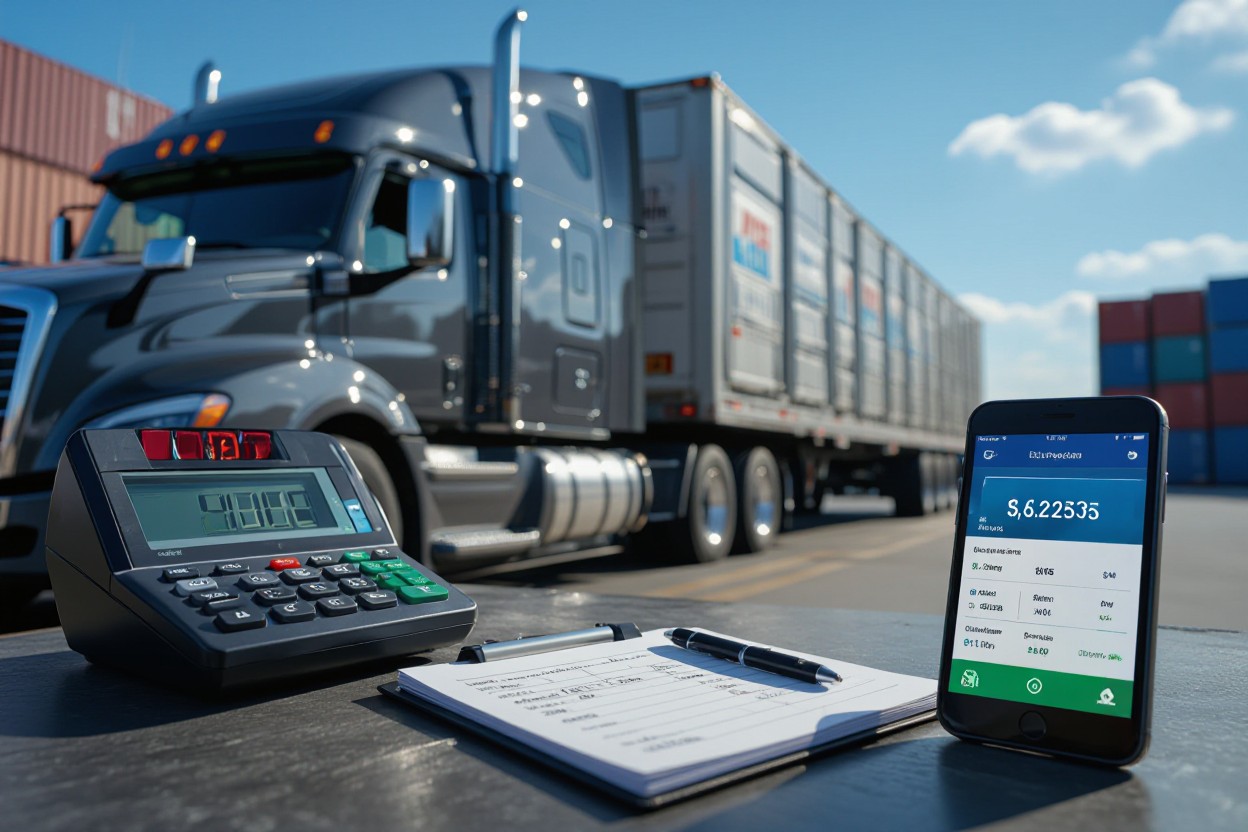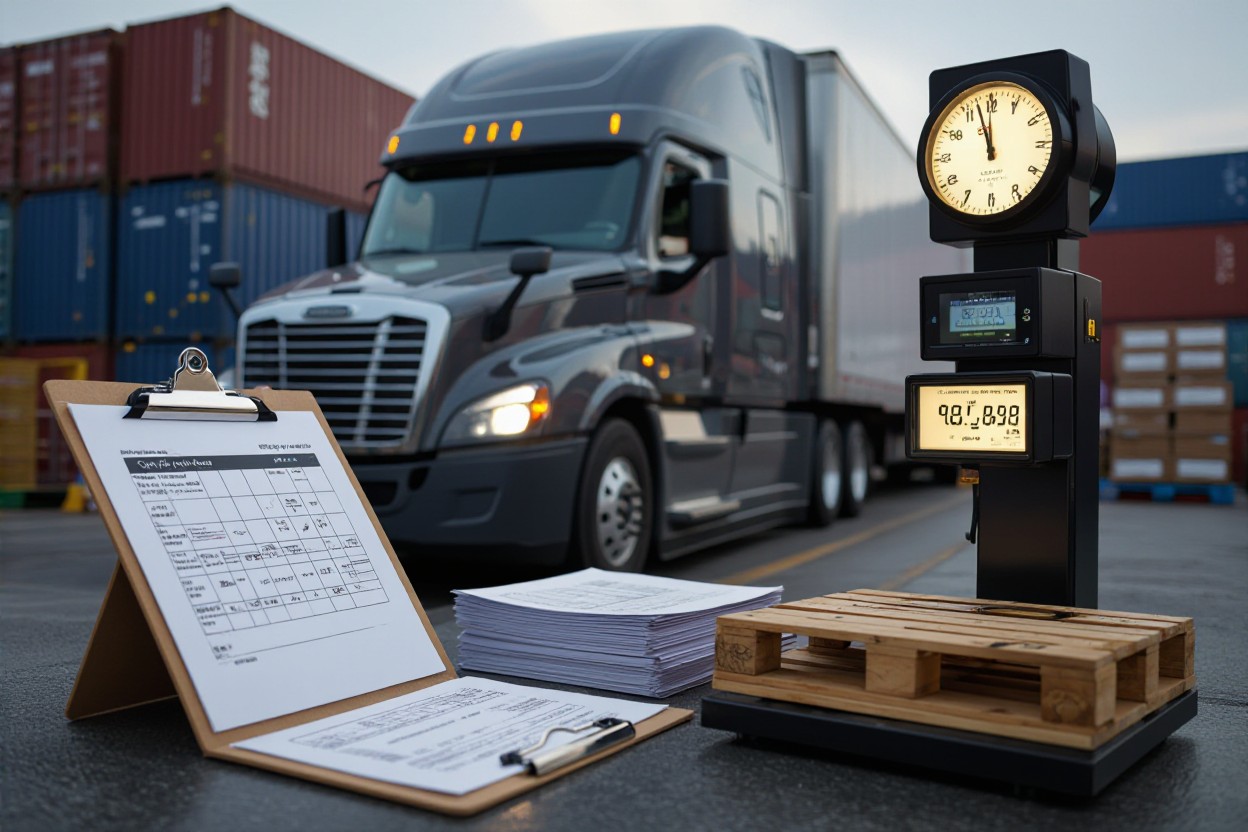
Many drivers lose pay while waiting at docks, but you can change that: learn to document detention, enforce contract terms, and push for accessorials so you get paid for every minute you’re stuck. Use precise e-logs and timestamped photos, submit formal detention claims, and negotiate with brokers; be assertive and professional. Track risks and safety hazards like heat, theft, or fatigue to justify claims and protect your well-being while maximizing revenue through consistent, documented procedures.
Key Takeaways:
- Negotiate clear detention/demurrage terms in your contract: specify per-minute/per-hour rates, free waiting time, start/end triggers, minimums and payment windows.
- Document every minute: use ELD/GPS timestamps, photos, gate logs and signed receiver or dispatch confirmations to prove arrival and release times.
- Invoice and enforce promptly: submit detention charges with supporting evidence per contract, apply late fees, escalate denials to brokers/shippers or compliance/claims channels.
Demystifying Dock Time Compensation
Detention and layover pay hinge on contracts more than on broad statutes: many shippers give 2 free hours for TD loads, then charge detention at common rates of $25–$100/hr. You should track arrival and release times, confirm load status via EDI or photos, and invoice using the BOL and timestamped proof; carriers routinely deny claims without that documentation, so your paperwork is the difference between a paid claim and a write-off.
The Legal Framework: Understanding Your Rights
Your entitlement to dock pay comes from the contract, bill of lading, or carrier tariff rather than a universal federal mandate; federal law rarely forces detention pay for private carriers. You should review the load confirmation for free-time windows, accrual start rules (arrival vs. cargo access), and the carrier’s claim window—most contracts require you to file within 7–30 days. Missing timestamps or PODs can void your claim, so preserve driver logs, photos, and ELD records immediately.
Industry Standards and Best Practices
Standard practices include listing detention under accessorials (EDI code DET), defining free time (commonly 2 hours), and specifying rates ($25–$100/hr or flat daily layover). You should get detention terms in writing, use timestamped ELD or yard-check photos as evidence, and submit a detailed invoice with BOL, arrival/release times, and signature to speed payment; many carriers pay within 15–30 days if documentation is complete.
Negotiate clauses that state when detention starts (arrival at gate vs. being hooked), set minimum charges (e.g., $200 minimum), and require electronic load confirmations to reduce disputes. When unpaid, escalate to the broker or shipper claims team, attach ELD/yard photos, and cite the accessorial charge and contract clause; persistent nonpayment can be pursued via small claims or arbitration per the contract terms.

Crafting an Invoicing Strategy That Works
Set a firm detention policy: offer a standard 2 free hours, then bill at a preset rate (industry common: $50–$100/hr) and state Net 30 payment terms with a 1.5%/month late fee. Automate invoices weekly so you submit within 7 days, attach ELD logs and gate photos, and keep a running spreadsheet of disputed claims. Standardizing these steps cuts payment lag and increases successful recoveries on every delayed load.
Essential Components of an Effective Invoice
Include a unique invoice number, invoice date, carrier MC and tax ID, load/BOL/PO numbers, pick-up and drop-off timestamps, total detention hours, line-item accessorials with unit rates, clear remittance instructions, and required signatures. Attach ELD timestamp PDF, gate photos or scale tickets as proof, and a short note explaining delays; missing any of these reduces your chance of getting paid.
Common Mistakes That Cost You Money
Submitting invoices late, leaving out precise timestamps, billing the wrong party, failing to itemize accessorials, relying on handwritten, illegible bills, and not attaching proof like ELD logs or photos are the top revenue killers. Each error can turn a $500 detention claim into a denied or ignored invoice.
Example: a driver lost $600 after submitting a handwritten invoice 21 days late without the BOL; carrier rejected it for lack of proof. Contrast that with a case where a fleet recovered $2,400 by sending a standardized invoice within 48 hours plus ELD logs and gate photos. Aim to submit within 7 days, always include the BOL and time-stamped ELD export, and use a template so you never omit critical fields.
Building Effective Communication with Dispatchers
Keep communication concise, documented, and time-stamped: text or email a clear arrival time, gate/door number, trailer ID, and a photo within the first five minutes of being staged. Many carriers provide a 2-hour free window and start detention pay afterward; get that policy and any hourly rate in writing before billing. If dispatch confirms verbally, follow up with a short written summary so you have proof for invoicing and audit trails.
Setting Expectations Before Dock Time Begins
Confirm the shipper’s expected load time, your carrier’s detention threshold (commonly 2 hours), and the exact detention rate—$20–$50/hour is common—before you arrive. Ask dispatch to list the gate/appointment number and the specific contact name/phone, and request pre-authorization for detention billing for any delay beyond the free window. Getting these items in writing—email or shipment portal—makes invoicing and dispute resolution far easier.
Reporting Delays: Best Practices for Quick Resolution
Report delays immediately by sending a short message with: arrival timestamp, gate/door, trailer ID, reason for delay (e.g., “waiting for forklift; dock occupied”), and a photo. If dispatch doesn’t respond within 15–30 minutes, escalate to the designated backup contact and note that escalation in your log. Always ask for written authorization to bill detention and confirm the start time you’ll use on your invoice so claims process faster.
Use a template message to save time: example — “ARRIVED 08:12 Gate A, Trailer 12345, waiting for load, photo attached. Request detention authorization if delay exceeds 2 hours.” Attach gate sheets, time-stamped photos, and any hold receipts; retain these records for at least 180 days. Filing a claim with your carrier should include the dispatcher confirmation, BOL, and timestamps to increase recovery odds and shorten dispute resolution to days rather than weeks.

Leveraging Technology to Track and Document Downtime
You should rely on digital evidence—ELD logs, GPS breadcrumbs, geofence entry/exit timestamps, and time‑stamped photos—to create an indisputable timeline of your dock delay. Automated ELD records and geofencing capture arrival/departure to the minute, while photos of trailer numbers and dock signs back up claims. Exportable CSVs and PDFs let you attach exact coordinates and status codes to invoices, making disputes harder to deny and increasing the likelihood of collecting detention pay.
Tools and Apps to Monitor Your Time at the Dock
Motive (KeepTruckin), BigRoad, Samsara, and TruckerPath provide automatic time stamps, geofencing, and exportable reports; BigRoad and Samsara also embed location coordinates in each event. Use Google Timeline or a dashcam app as a redundant backup. Look for apps that export PDF/CSV, allow photo attachments, and log status changes by the minute so you can bill in 15‑minute increments with verifiable proof.
How to Use Your Records to Boost Your Earnings
Turn raw logs into an itemized detention invoice: list load/BOL, arrival and release timestamps, total minutes detained, your agreed detention rate, and attached ELD export + time‑stamped photos. Send the packet to dispatch/broker with a short summary and keep copies. If denied, escalate with the carrier or broker and present the same digital record—organized exports cut dispute time and increase recovery odds.
Example billing method: if your contract allows $30/hour detention and you were held 2 hours 45 minutes, bill in 15‑minute increments: 11 quarters × $7.50 = $82.50. Export the ELD CSV showing arrival 08:05 and release 10:50, attach three time‑stamped photos of trailer/door numbers, and include GPS coordinates. Send as a single PDF and request payment per your rate confirmation; this clear, numbered packet makes approvals and factoring advances far easier.
Exploring Additional Income Streams While Docked
Creative Solutions for Earning While Waiting
Tap into remote gigs from your cab: transcription on Rev, short design jobs on Fiverr, or dispatching/route planning for owner-operators via Upwork can pay roughly $10–30/hr for skilled work and $5–15/hr for microtasks. Sell high-quality rig or cargo photos to stock sites, monetize short YouTube/TikTok clips about life on the road, or offer in-cab services like spreadsheet setup for small carriers. Use secure Wi‑Fi and never alter your logs to take extra work—HOS compliance protects you from fines.
Networking Opportunities During Extended Downtime
Strike up conversations with terminal managers, brokers, and other drivers to get on preferred carrier lists or snag return loads; exchange contact info, follow up within 24–48 hours, and note lanes they need covered. Drivers who proactively network often find backhauls that cut empty miles by hundreds each month, turning idle hours into future revenue opportunities.
When you follow up, send a brief message: your name, unit number, available dates, equipment type, and a link to a simple digital business card or carrier profile. Offer specific lanes you can cover, mention endorsements or specialized gear (e.g., flatbed straps, liftgate, HazMat), and log contacts in your phone or a spreadsheet so you can track responses—this systematic approach converts casual chats into consistent extra loads.
Summing up
With this in mind, you should track and document detention time from arrival, negotiate detention and accessorial terms before hauling, submit timely invoices with proof, use ELD/TMS timestamps and carrier portals to support claims, and enforce rates through dispatch or legal support when needed—doing so ensures you get paid for every minute you’re stuck at a dock and protects your bottom line.
FAQ
Q: What exactly counts as detention and who pays me when I’m stuck at a dock?
A: Detention is time the driver spends waiting to load or unload beyond the agreed “free time” in the rate confirmation, carrier agreement, or bill of lading. Responsibility to pay detention is contractual: the carrier’s customer (shipper or broker) typically pays accessorial charges specified in the rate confirmation; if you’re an owner-operator under a lease, your carrier agreement with the carrier determines allocation. Always check the rate confirmation for free-time provisions, detention rate (hourly or per-minute), minimums, and whether detention must be pre-approved to be billable. If terms are silent, billing can still be pursued under commercial practice, but enforcement depends on the written contract and any communication that documents consent to pay detention.
Q: What evidence should I collect while waiting so I can prove and bill every minute?
A: Collect objective, time-stamped proof: gate in/gate out timestamps, scale tickets, BOL and POD with timestamps or signatures, ELD/GPS logs showing engine-on/idle or location, photos of the trailer and dock area with visible time-of-day indicators, dispatch or broker text/email timestamps acknowledging delay, appointment confirmation showing earliest available slot, and any facility-generated receipts or wait slips. Log the exact detention start and stop times in your driver log and in writing to dispatch/broker immediately when delay begins. Keep all related documents together and back them up (photo and PDF) so the invoice can include consolidated, time-ordered evidence for each minute billed.
Q: How do I invoice and enforce payment for detention so I actually get paid for every minute?
A: Invoice using a clear template that references the rate confirmation or carrier agreement, lists pro/BOL numbers, shows detention start and stop times, calculates time billed by the agreed rate (hourly or per-minute) and minimums, and attaches all supporting evidence. Submit invoices per the contract’s billing window and follow the carrier/broker’s required electronic or paper submission method; add late-payment penalties only if agreed in writing. If a payer disputes, escalate with documented communications: formatted dispute letter, re-submission with highlighted proof, and involvement of your carrier sales rep or broker operations. If internal escalation fails, pursue contract remedies: collections, mediation/arbitration, small-claims court, or legal action depending on the contract’s dispute resolution clause and claim size; maintain all paperwork and chain-of-communication to support the claim. Proactively negotiate future loads to include explicit detention start/stop definitions, free-time hours, per-minute billing, and pre-approval requirements to reduce disputes.



